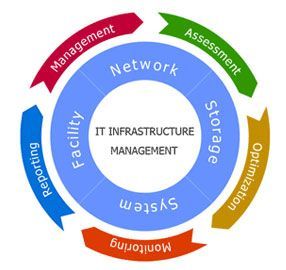
Effective IT infrastructure management is essential for businesses of all sizes to ensure seamless work processes and to stay competitive in today's fast-paced digital world. With the increasing reliance on technology, companies must have a solid infrastructure in place to support their operations, connect their teams, and enable them to work efficiently. In this article, we will explore the key aspects of IT infrastructure management, its benefits, and how it can contribute to the success of a business.
Understanding IT Infrastructure Management
IT infrastructure management refers to the process of planning, designing, implementing, and maintaining the components that make up an organization's IT environment. This includes hardware, software, networks, data centers, security systems, and other related technologies. The goal of IT infrastructure management is to ensure the availability, reliability, and scalability of IT resources, as well as to optimize performance, minimize downtime, and enhance security.
The Importance of IT Infrastructure Management
A well-managed IT infrastructure is crucial for several reasons: Efficient Workflow: A well-designed and integrated IT infrastructure facilitates the smooth flow of information, enhances collaboration among teams, and enables employees to work productively. It ensures that the right resources are available when needed, minimizing disruptions and delays. Business Continuity: An effective infrastructure management strategy includes disaster recovery and business continuity plans. These measures help businesses recover quickly from any unforeseen events, such as hardware failures, cyber-attacks, or natural disasters. With proper backup systems and redundancy in place, organizations can minimize data loss and downtime, ensuring uninterrupted operations. Scalability: As businesses grow, their IT requirements change as well. Effective infrastructure management allows for scalability, enabling organizations to expand their IT resources to meet growing demands. This flexibility ensures that businesses can adapt to changing market conditions and technological advancements without significant disruptions. Cost Optimization: By managing IT infrastructure efficiently, businesses can optimize costs associated with maintenance, support, and upgrades. With proper planning and monitoring, unnecessary expenses can be reduced, providing organizations with a competitive edge. Enhanced Security: IT infrastructure management includes implementing robust security measures to protect sensitive data and systems from unauthorized access, cyber threats, and data breaches. By regularly monitoring and updating security protocols, organizations can ensure the integrity and confidentiality of their information.
Key Components of IT Infrastructure Management
Effective IT infrastructure management involves several key components:
Hardware and Software Management
Hardware and software management entails selecting, deploying, and maintaining the appropriate hardware and software solutions to meet the organization's needs. This includes servers, computers, networking devices, operating systems, and applications. Regular updates, patch management, and license compliance are critical to ensure optimal performance and security.
Network Management
Network management focuses on designing, configuring, and monitoring the organization's network infrastructure. This includes routers, switches, firewalls, and other networking devices. Network monitoring allows IT teams to identify and resolve issues proactively, ensuring reliable connectivity and minimizing downtime.
Data Center Management
Data centers house critical IT infrastructure components such as servers, storage devices, and networking equipment. Effective data center management involves ensuring optimal temperature and humidity levels, implementing backup and disaster recovery solutions, and maintaining efficient power distribution. Regular audits to assess capacity and performance are also essential.
Security Management
Security management involves implementing security measures to protect information and systems from unauthorized access, malware, and other threats. This includes user access control, encryption, intrusion detection systems, and regular security audits. Timely patching and updating of software and firmware are essential to address vulnerabilities.
Monitoring and Performance Management
Monitoring and performance management involve continuously monitoring the organization's IT infrastructure to identify potential problems and optimize performance. This includes monitoring server and network uptime, response times, resource utilization, and application performance. By collecting and analyzing data, IT teams can identify areas for improvement and address any issues that may impact productivity.
The Role of Managed Service Providers (MSPs)
Many organizations choose to partner with Managed Service Providers (MSPs) for effective IT infrastructure management. MSPs offer expertise, scalability, and cost advantages. They can handle day-to-day operations, monitor systems, and provide ongoing support, allowing internal IT teams to focus on strategic initiatives. Conclusion: In today's interconnected world, IT infrastructure management is critical for organizations to ensure seamless work processes and stay competitive. By managing hardware, software, networks, data centers, and security systems effectively, businesses can enhance productivity, optimize costs, improve security, and adapt to changing demands. Considering the complexity and importance of IT infrastructure, partnering with reliable Managed Service Providers can provide organizations with the expertise and support needed to leverage technology for success.
